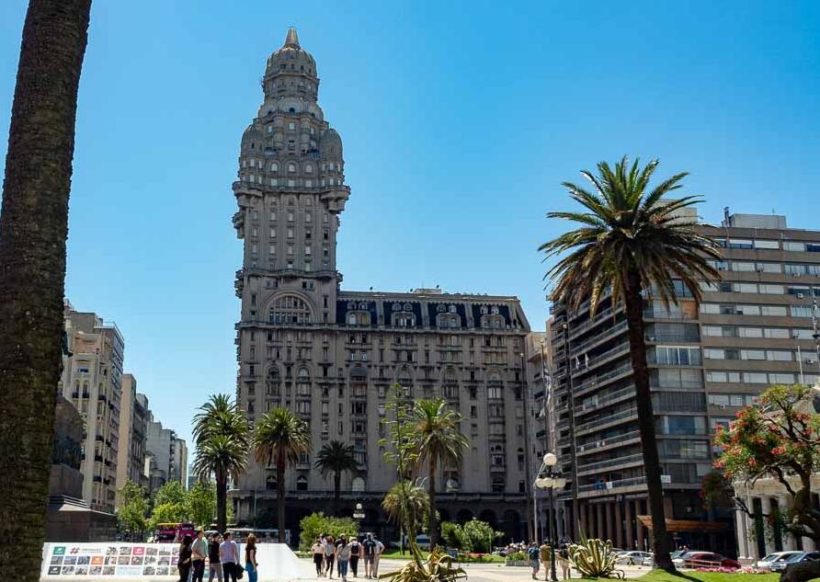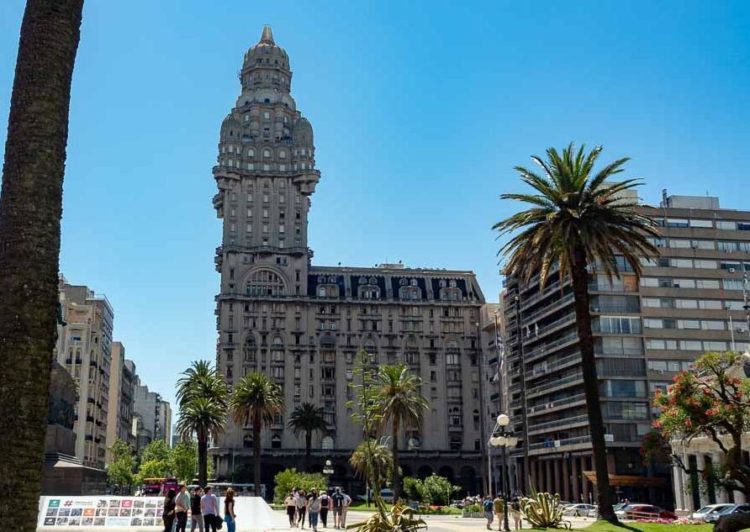Uruguay’s literature originated in the independence wars of the early 1800s. From there, literature has evolved in line with literary trends in the rest of Latin America in general, and in Argentina in particular.
National identity and gaucho literature
Early Uruguayan literature is characterized not by particular aesthetic expressions, but by being concerned with a search for Uruguayan identity. The question “what does it mean to be from Uruguay?” was important.
Bartolome Hidalgo (1788-1822) was in his poetry one of the forerunners of the later so popular gaucho -diktningen. Hidalgo also addressed topics that wanted a separate Uruguayan state and Uruguayan nationality. In the same era we find Fransisco Acuña Acevedo (1791-1862), the author of Uruguay’s national anthem.
Other writers who addressed the nation state, the Uruguayan identity and the gauchos in their texts were Alejandro Magariños Cervantes (1825–1893), with the novel Caramurú (1848), Eduardo Acevedo Díaz (1851–1921), with the realistic novel Ismael (1888). and Juan Zorrilla de San Martín (1855–1931).
Magariños was one of the country’s first romantic poets.
“Generation 900”
At the beginning of the 20th century, Uruguayan writers were influenced by modernism. The authors active between 1880 and 1920 were defined as “la generación del 900″ (generation 900). The ” Modernista” movement’s foremost representatives were the lyricists Julio Herrera y Reissig (1875–1910), María Eugenia Vaz Ferreira (1875–1924), and Delmira Agustini (1886–1914), known for their glowing erotic poems. The movement’s theorist was José Enrique Rodó (1871-1917), with his main work, the great essay Ariel (1900).
The novelist Carlos Reyles (1868–1938) and the novelists Javier de Viana (1868–1926) and Horacio Quiroga (1878–1937) were close to the modernist movement, while exhibiting strong realistic features. In his philosophical writings, Carlos Vaz Ferreira (1873–58) appeared as an opponent of positivism. However, the realistic and naturalistic tradition was carried on by, among others, the playwrights Florencio Sánchez (1875–1910) and Ernesto Herrera (1889–1917).
After the First World War
Around World War I, a new author generation emerged, with Juana de Ibarbourou (1892-1979) as the foremost lyricist. Other representatives include Carlos Sabar Ercasty (1887–1982), Emilio Oribe (1893–1975) and Esther de Cáseres (1903–1971).
In the interwar years, a number of novelists made their entry: Enrique Amorim, who recaptured the gaucho motif in El caballo y su sombra (1941), Francisco Espínola, Felisberto Hernández (1902-1964) and Juan Carlos Onetti (1900-1964).
“Generation 45”
The Uruguayan writers who were active in the period 1945–1950 have been named “la generación del 45” (generation 45). This group of writers had a great influence on the intellectual environment of the time in Uruguay, and the group consisted of, in addition to writers, lawyers, literary critics and musicians. Many of the members belonged to the political left movement in Uruguay. Some well-known representatives of la generación del 45 are Carlos Quijano (1900–1984), Angel Rama (1926–1983), Maria Silva Inés Vila (1927–1991), Idea Vilariño (1920–2009), Armonía Somer (1914–1994). and Mario Benedetti (1920–2009).
Juan Carlos Onetti (1909–1994) is also mentioned as part of generation 45, despite being a few years older than many of the other members. Many believe that Onetti was such an important writer that he should also be mentioned as part of the Latin American flourishing (el boom latinoamericano). This was a literary upturn that took place in Latin America in the 1960s and 1970s, with the result that several writers from the continent gained great success and recognition in Europe.
Late 1900s
There was dictatorship in Uruguay from 1973 to 1985. The restoration of democracy led to many of the writers who, for fear, did not publish texts during the dictatorship, now resumed work. The country’s recent history has been the subject of many writers. For example, texts that deal with the authors’ own stories of what they experienced during the dictatorship. Mauricio Rosencof (1933–) and Eleuterio Fernandez Huidobro (1942–2016) with his book Memorias del calabozo (Memories from the Dungeon) from 1987 should be mentioned in this regard.
Although many authors addressed topics such as torture, dictatorship and the country’s recent history, several wrote about completely different things. The novel Maluco, la novela de los descubridores (1989) by Napoleón Baccino Ponce de León (1947) is about Magallanes’ experiences, told through the eyes of one of the crew on the ship. Among the short story writers are Carlos Martínez Moreno (1917–1986), and in the drama Antonio Larreta (1922–2015) and Carlos Maggi (1922–2015).
Mario Benedetti (1920–2009) has made himself known both as a novelist and short story writer, and as a critic, lyricist and playwright. Eduardo Galeano (1940–2015) first became internationally familiar with his book on Latin America’s underdevelopment ( Latin America’s Open Years, 1979). He later wrote novels about his contemporary, while Cristina Peri Rossi (1941–) is known for his feminist novels and short stories. Other well-known authors are Hugo Fontana (1955–), Jorge Burel (1956–) and José Hugo Burel Guerra (1951–).
New Uruguayan Literature
The economic crisis that Uruguay underwent in 2002 inspired texts on new poverty and few prospects. Other writers write about completely different themes and have elements of history and imagination. Damián González Bertolino (1980–) and Valentín Trujillo (1979–) are two young writers worth mentioning.

